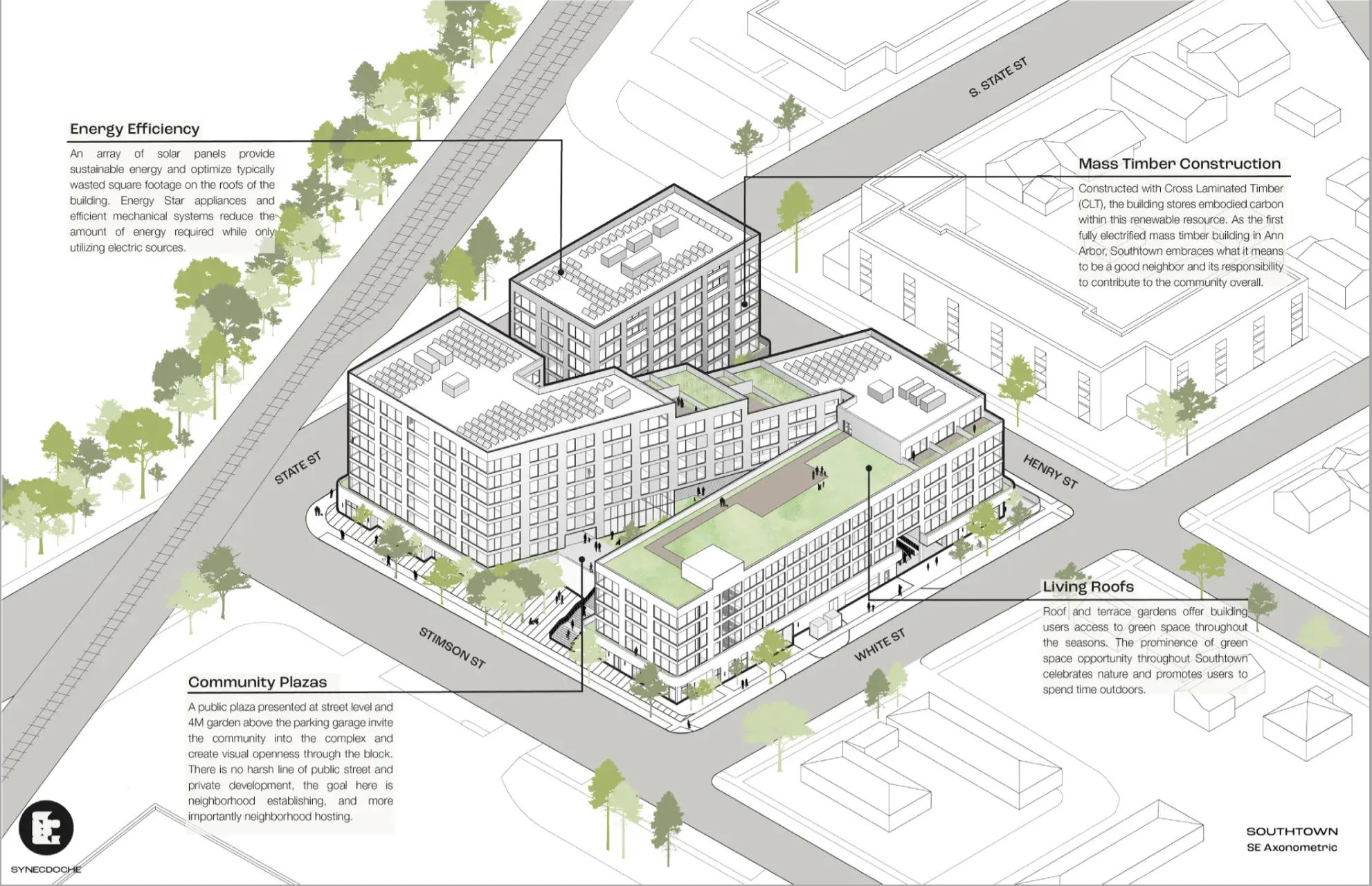
The term “off-grid” conjures a cabin in the woods, not sophisticated urban buildings. But that’s beginning to change, and the latest example is an apartment building in Ann Arbor, Michigan.
What’s most interesting is why the developers of this 225-unit structure chose to forego an electric grid connection. It turns out that onsite energy will be cheaper, cleaner and more reliable than what the local utility would provide, explains Steve Pullins, CEO of ResSET, in Energy Changemakers’ new podcast: Off Grid and Urban: An Apartment Building that Signals the Future.
Pullins, previously chief technology officer at AlphaStruxure, and a longtime innovator in the distributed energy space, is working with Michigan real estate developer 4M on what’s known as SouthTown, a multi-family complex near the University of Michigan.
Expected to break ground in March, the eight-story structure is more than a construction project — big concepts lie behind it.
Listen to the podcast
4M describes the project as a “merging of real estate and energy development into a single practice,” which allows the team to tackle housing affordability in a new way.
On the real estate front, the project reduces costs by using off-site assembly for as much of the mass timber structure as possible.
On the energy front, it incorporates onsite geothermal, batteries, solar, fuel cells, carbon capture and renewable natural gas to reduce carbon emissions and spare tenants from what it forecasts will be annual utility rate increases of about 4.5%.
The developers also thought through how to ease the financial burden of car ownership for its tenants. Housing a car in Ann Arbor can cost hundreds of dollars per month. That’s not something SouthTown could offset easily since its design allowed for only 54 parking spaces. So tenants will be offered a car share program modeled after Zipcar that uses electric vehicles parked onsite.
Shelter during Ann Arbor’s harsh winters
Climate issues were at the forefront of the design team’s thinking as they aimed for net carbon neutrality and weather resilience. The local utility, DTE Energy, recently came under scrutiny when a state-commissioned audit identified lengthy and widespread outages on its aging grid. Michigan’s propensity for frigid temperatures, snow, and ice makes the electric grid vulnerable exactly when it’s unsafe for people to go outdoors. This is a serious problem in Ann Arbor, where local rules require tenants to evacuate during a power outage. By providing onsite energy, SouthTown provides shelter in place. Tenants don’t have to brave the weather.
The team also takes an interesting approach to energy modeling and load forecasting. Rather than using a standard capacity measure for how much energy an appliance uses, they looked at its actual energy consumption, given the amount of time it would be used. This reduced the overall energy needs in the building and prevented an overbuild of energy supply.
The desire to provide all of these features — sustainability, safety, lower cost of living — led the team to conclude that going off-grid made sense.
“Let’s just go off-grid”
“Frankly, when we looked at the numbers, the grid emissions in Ann Arbor were two times the national average. If we use the grid, we’re going to have a risk associated with resilience. We’re going to have a challenge to affordability. And we’re going to bust our objective on sustainability in the short term and the long term,” Pullins says.
Hearing this, the project owner told Pullins, “Let’s just go off-grid.”
Subscribe to the free Energy Changemakers Newsletter.

